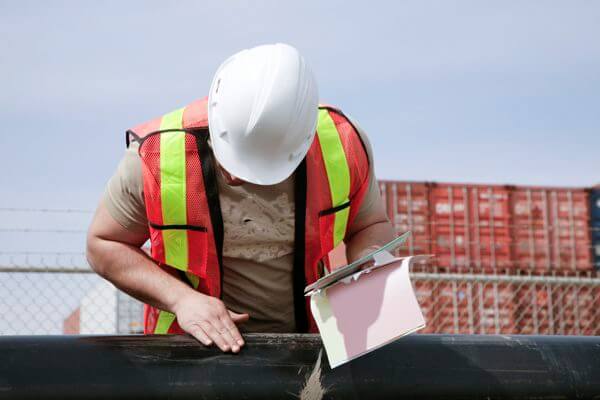10 Essential Items for Your Building Code Review Checklist

Compliance with building codes is essential in the construction industry. These codes are designed to ensure the safety, functionality, and sustainability of structures. However, navigating the intricate landscape of building regulations can be daunting. That’s where a comprehensive building code review checklist becomes extremely important. In this guide, we’ll walk you through the 10 essential items to include in your checklist to ensure compliance and peace of mind throughout your construction project.
1. Zoning Regulations
Before laying the foundation of any structure, it’s crucial to understand the zoning regulations governing the intended location. Zoning ordinances dictate land use, setbacks, height restrictions, and other factors that directly impact construction. Incorporating zoning requirements into your building code review checklist helps prevent costly setbacks and ensures your project aligns with local regulations. Understanding these regulations not only ensures compliance but also aids in optimizing the use of the land and streamlining the permitting process.
2. Occupancy Classification
Determining the intended use of a building is fundamental to establishing its occupancy classification. Different occupancy types have distinct safety and regulatory requirements. Whether it’s a residential, commercial, or industrial space, understanding occupancy classifications helps tailor your design and construction approach to meet specific code mandates. Factors such as the number of occupants, the type of activities conducted, and the potential hazards present influence the classification. By correctly identifying the occupancy classification early in the design process, you can ensure that your building meets the necessary safety standards and regulatory requirements.
3. Structural Requirements
The structural integrity of a building is non-negotiable. Your building code review checklist should encompass assessments for load-bearing capacity, foundation design, and seismic considerations. Adhering to structural requirements not only safeguards occupants but also enhances the longevity and resilience of the structure. Structural engineers play a vital role in ensuring that buildings can withstand various loads and environmental conditions. By incorporating structural requirements into your checklist, you can mitigate the risk of structural failures and ensure the safety and stability of your building throughout its lifespan.
4. Fire Safety Measures

Fire safety is a top priority in any construction job. Prioritizing fire safety not only saves lives but also protects property and mitigates liability risks. Fire safety measures include passive and active systems designed to prevent, detect, and suppress fires. These measures aim to minimize the risk of fire-related injuries, deaths, and property damage. By incorporating fire safety measures into your building code review checklist, you can ensure that your building meets the necessary standards and provides a safe environment for occupants.
5. Accessibility Standards
Creating inclusive environments is a cornerstone of modern construction practices. Your checklist should encompass accessibility standards outlined in the Americans with Disabilities Act (ADA) and other relevant regulations. Incorporating features like wheelchair ramps, accessible parking, and tactile signage ensures equal access for all individuals. Accessibility standards aim to remove barriers and ensure that buildings, facilities, and services are accessible to people with disabilities. By incorporating accessibility standards into your checklist, you can create spaces that are welcoming, inclusive, and compliant with legal requirements.
6. Plumbing and Mechanical Systems
Properly functioning plumbing and mechanical systems are essential for the comfort and functionality of a building. Compliance with plumbing and mechanical codes enhances occupant comfort and minimizes maintenance issues. Plumbing systems include water supply, drainage, and sewage disposal systems, while mechanical systems encompass heating, ventilation, and air conditioning (HVAC) systems. By incorporating plumbing and mechanical requirements into your building code review checklist, you can ensure that these systems are designed and installed correctly, promoting occupant health, safety, and comfort.
7. Electrical Systems
Electrical safety is paramount in any building project. Your checklist should cover electrical wiring, outlets, grounding, and other electrical components. Adherence to electrical codes not only prevents electrical hazards but also ensures the efficient and reliable operation of electrical systems. Electrical systems play a critical role in providing power for lighting, appliances, equipment, and other electrical devices. By incorporating electrical requirements into your checklist, you can ensure that your building’s electrical systems are designed, installed, and maintained to the highest standards of safety and reliability.
8. Energy Efficiency
Energy efficiency is a primary concern in a sustainable era. Your building code review checklist should incorporate measures to optimize energy performance, such as insulation requirements, lighting efficiency, and renewable energy options. Embracing energy-efficient design not only reduces environmental impact but also lowers operational costs for building owners. Energy efficiency measures aim to reduce energy consumption and greenhouse gas emissions while maximizing the use of renewable energy sources. With energy efficiency requirements on your checklist, you can create buildings that are environmentally responsible, cost-effective, and comfortable for occupants.
9. Environmental Considerations
Environmental stewardship is integral to responsible construction practices. Incorporating green building practices not only minimizes the ecological footprint but also enhances the overall resilience of the built environment. Environmental considerations encompass various strategies and techniques aimed at reducing the environmental impact of construction projects. By incorporating environmental considerations into your checklist, you can minimize resource consumption, mitigate environmental damage, and promote sustainable development.
10. Documentation and Record-Keeping
Thorough documentation is essential throughout the construction process. Your building code review checklist should include provisions for maintaining records of permits, inspections, design modifications, and contractor qualifications. Comprehensive documentation not only ensures compliance with regulatory requirements but also facilitates transparency and accountability. Documentation and record-keeping are essential components of effective project management and regulatory compliance. By maintaining accurate and up-to-date records, you can track the progress of your project, identify potential issues, and demonstrate compliance with building codes and other regulations.
Conclusion
Incorporating the essential items discussed in this blog post into your building code review checklist can help streamline the compliance process, mitigate risks, and ensure the safety and quality of construction projects. By prioritizing thorough review and adherence to regulatory requirements, you can minimize potential issues and create safer, more sustainable buildings that meet the needs of occupants and communities. Remember to consult with qualified professionals and stay updated on changes to building codes and standards to ensure ongoing compliance and best practices in your projects.











